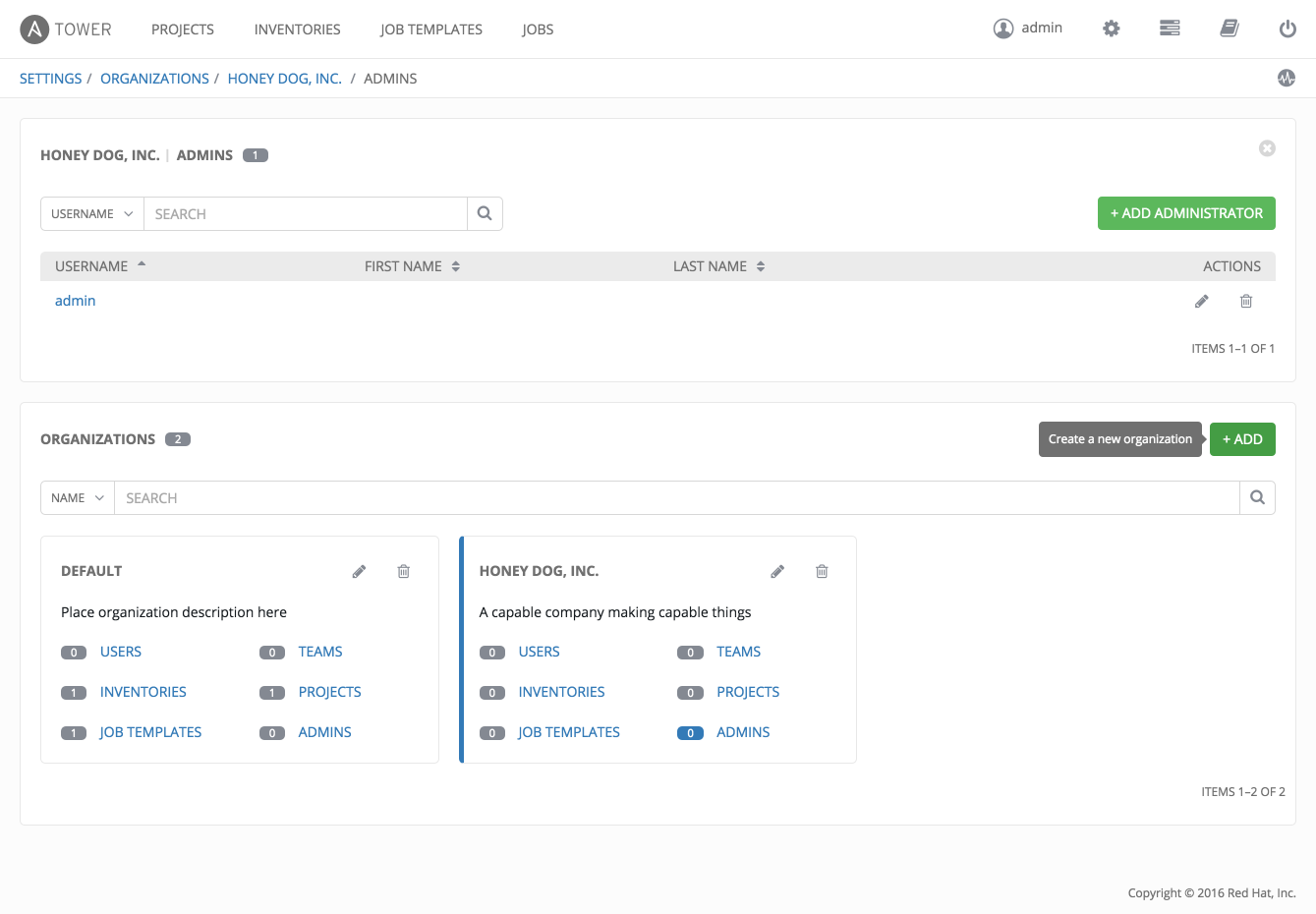6. Organizations¶
An Organization is a logical collection of Users, Teams, Projects, and Inventories, and is the highest level in the Tower object hierarchy.
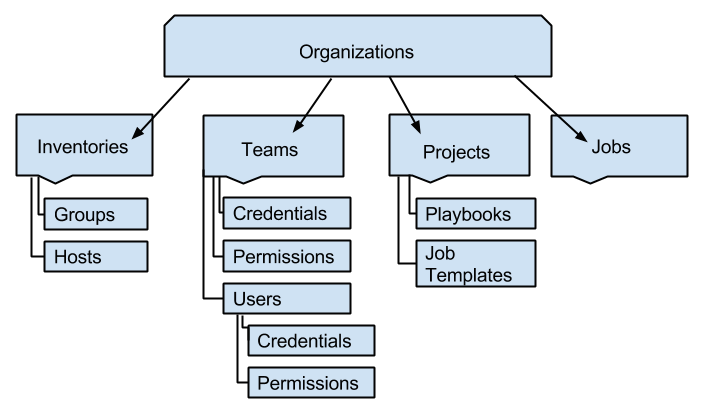
The Organizations link from the Settings ( ) menu displays all of the existing organizations for your installation of Tower. Organizations can be searched by Name or Description. Modify and remove organizations using the Edit and
Delete buttons.
) menu displays all of the existing organizations for your installation of Tower. Organizations can be searched by Name or Description. Modify and remove organizations using the Edit and
Delete buttons.
Note
Tower creates a default organization automatically. Users of Tower with a Self-Support level license (formerly called Basic) only have the default organization available and should not delete it. Users of older versions of Tower (prior to 2.2) will not see this default organization.
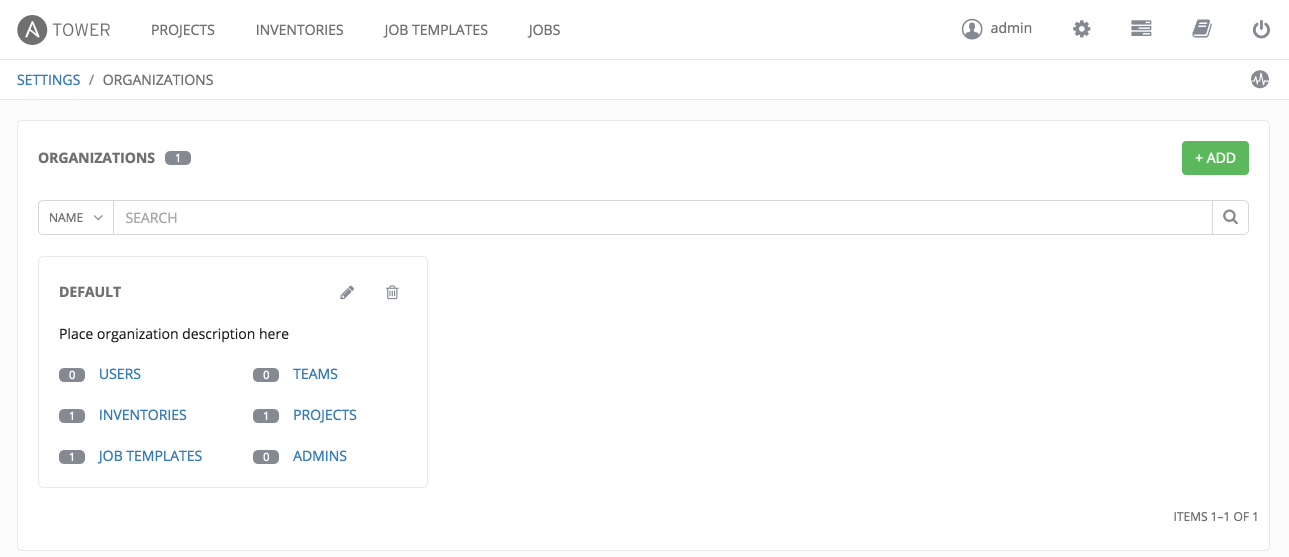
Enterprise: Standard and Enterprise: Premium Tower licenses allow you to create a new Organization by selecting the  button.
button.
Note
If you are using Ansible Tower with a Self-Support level license (formerly called Basic), you must use the default Organization. Do not delete it and try to add a new Organization, or you will break your Tower setup. Only Enterprise: Standard or Enterprise: Premium Tower licenses have the ability to add new Organizations beyond the default.
- Enter the Name for your Organization.
- Optionally, enter a Description for the Organization.
Click Save to finish creating the Organization.
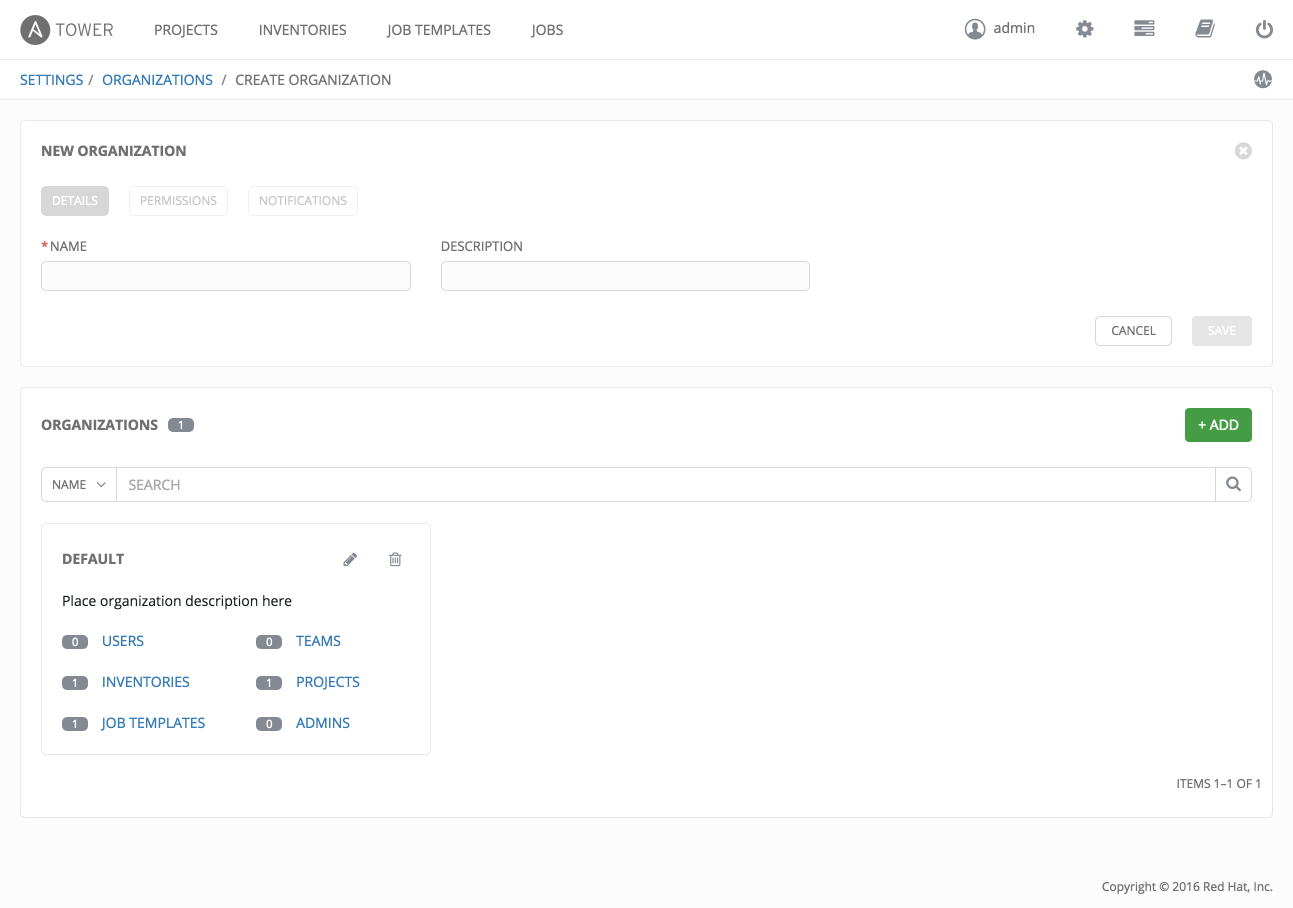
Once created, Tower displays the Organization details, and allows for the managing of users and administrators for the Organization.

6.1. Organizations - Permissions¶
Clicking on Permissions (beside Details when viewing your organization), allows you to review, grant, edit, and remove associated permissions for users as well as team members.
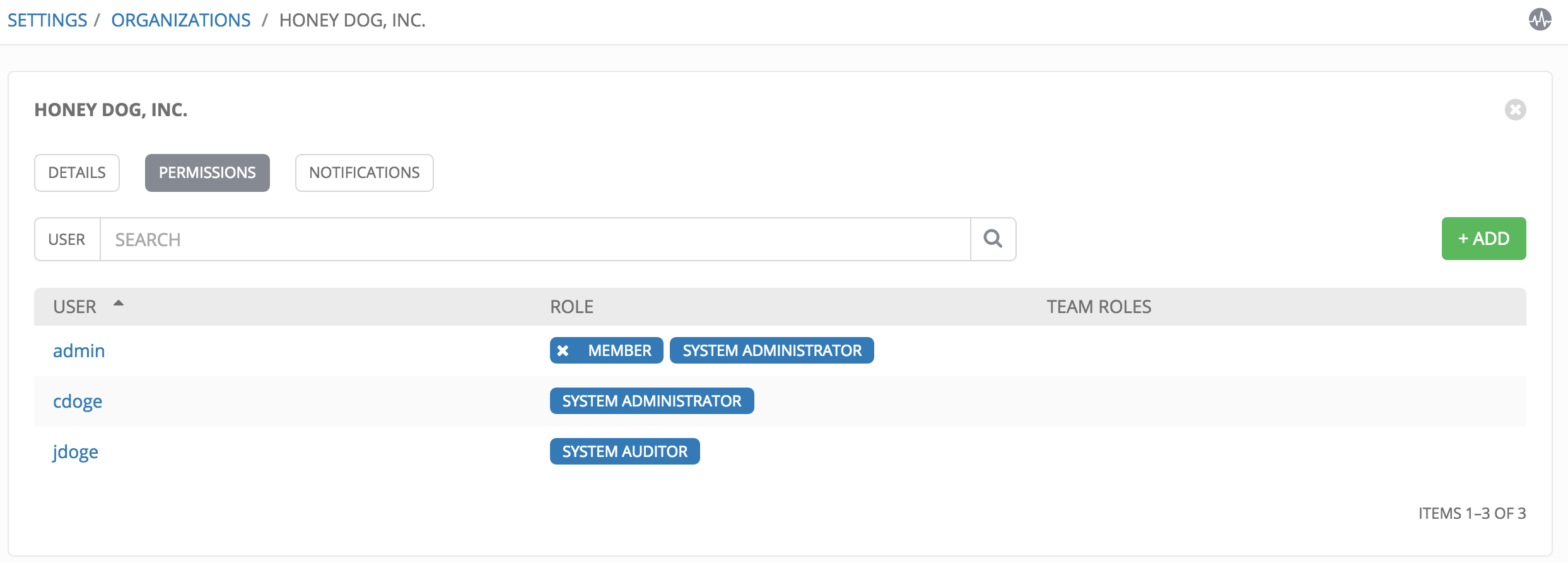
Click the  button to create new permissions for this organization.
button to create new permissions for this organization.
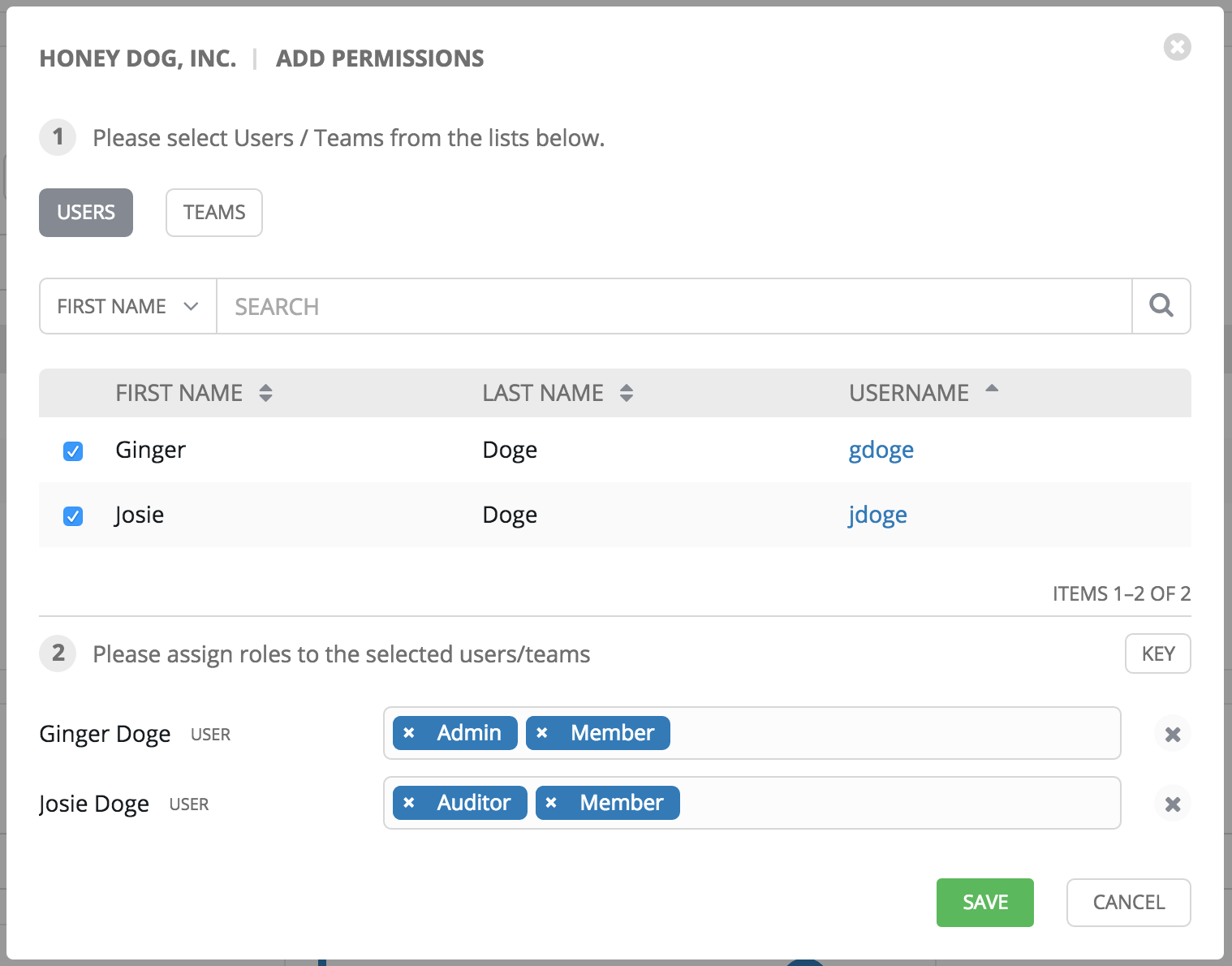
In this example, two users have been selected and each have been granted permissions for this organization.
You can also assign permissions to teams. Note that you do not have to choose between teams or users, and that you can assign permissions to both at the same time.

6.2. Organizations - Notifications¶
Clicking on Notifications (beside Details when viewing your organization), allows you to easily manage notifications for this organization.
Click on the  button to create a notification.
button to create a notification.
Supported notification sources include Slack, Email, SMS (via Twilio), HipChat, and more. Refer to Notifications for more information.

6.3. Organizations - Users¶
The Users submenu of an Organization displays all the Users associated with this Organization. A User is someone with access to Tower with associated roles and Credentials. Expand the Users menu by selecting Users in the Organization Summary.
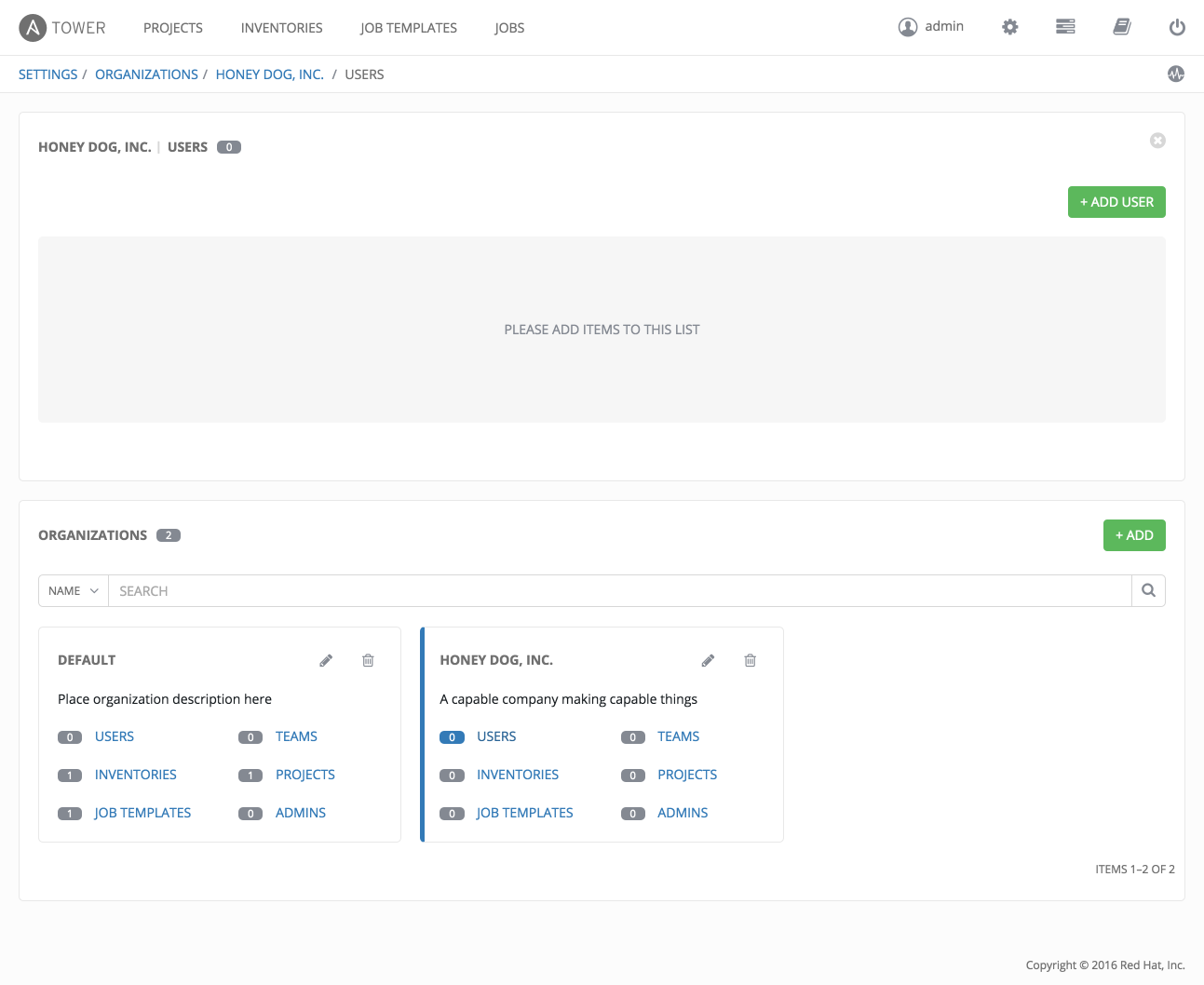
This menu allows you to manage the user membership for this Organization. (User membership may also be managed on a per-user basis via the Users link available from the Settings  menu.) The user list may be sorted and searched by Username, First Name, or Last Name. Existing users may also be modified and removed using the Edit and Delete buttons. Clicking on a user brings up that user’s details, which can then be edited. For more information, refer to Users.
menu.) The user list may be sorted and searched by Username, First Name, or Last Name. Existing users may also be modified and removed using the Edit and Delete buttons. Clicking on a user brings up that user’s details, which can then be edited. For more information, refer to Users.
To add existing users to the Organization, click the  button. Then,
select one or more users from the list of available users by clicking
the Select checkbox or clicking anywhere on the user row. Click the
Select button when done.
button. Then,
select one or more users from the list of available users by clicking
the Select checkbox or clicking anywhere on the user row. Click the
Select button when done.
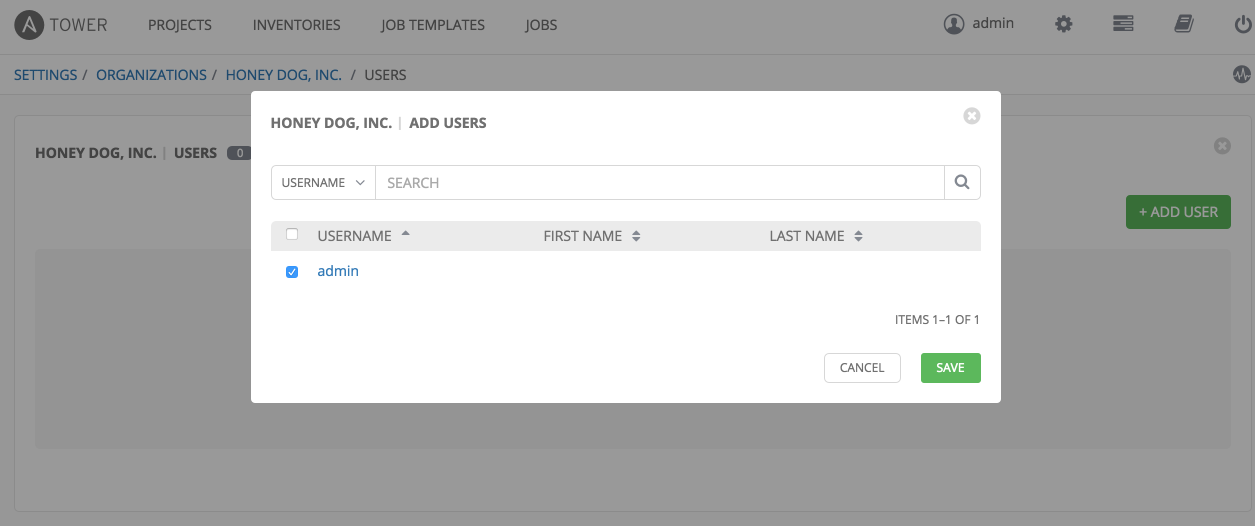
6.4. Organization - Administrators¶
An Organization Administrator is a type of user that has the rights to create, modify, or delete objects in the Organization, including Projects, Teams, and Users in that Organization. Expand the Admins submenu by selecting Admins in the Organization Summary.
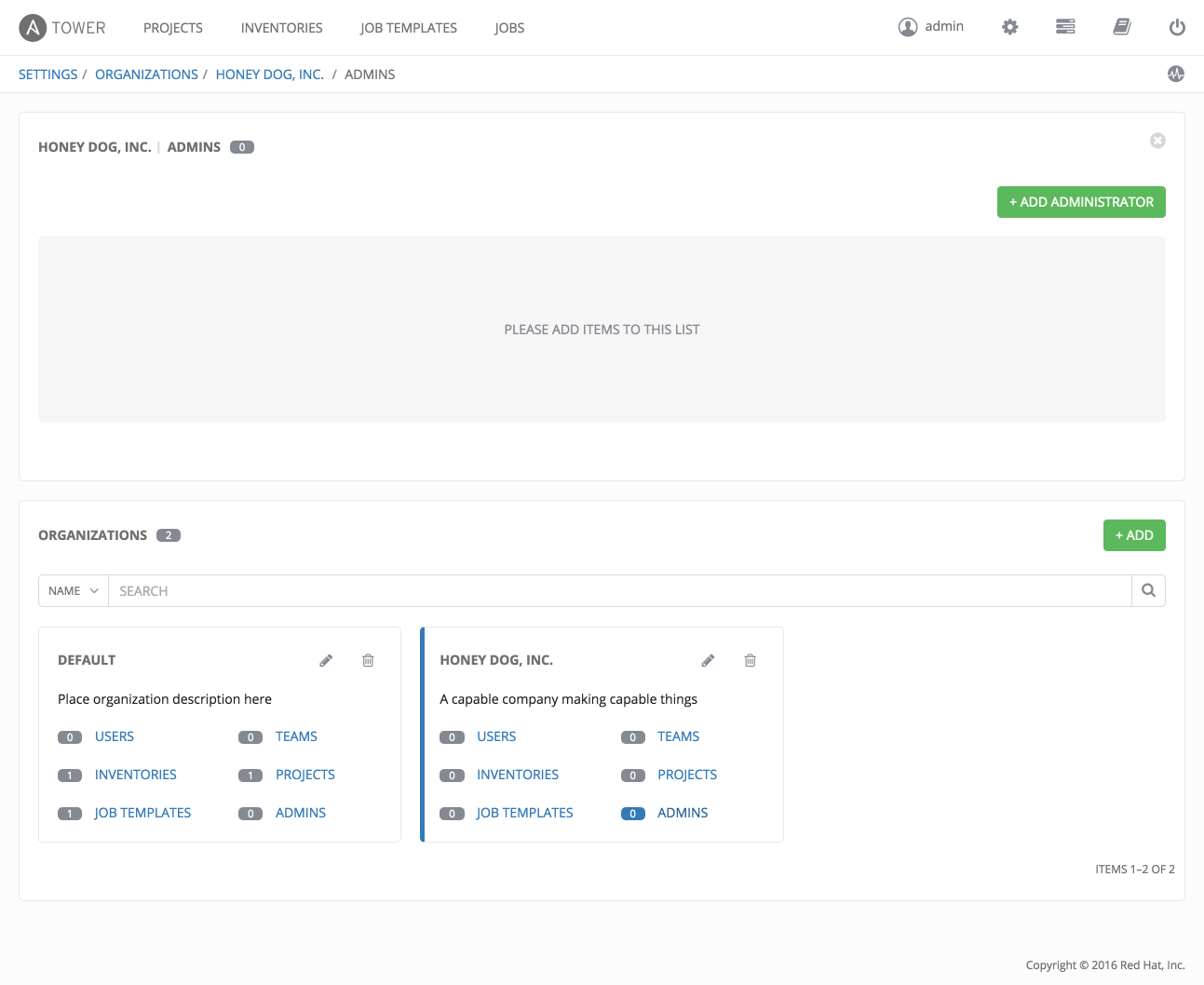
This menu displays a list of the users that are currently setup as an administrator of the Organization. The administrator list may be sorted and searched by Username, First Name, or Last Name.
Note
Any user marked as a ‘Superuser’ is implicitly an administrator of all Organizations, and is not displayed here.
To add an administrator to the Organization, click the  button. Select one or more users from the list of available users by clicking the Select checkbox or clicking anywhere on the user row. Click the Select button when done.
button. Select one or more users from the list of available users by clicking the Select checkbox or clicking anywhere on the user row. Click the Select button when done.
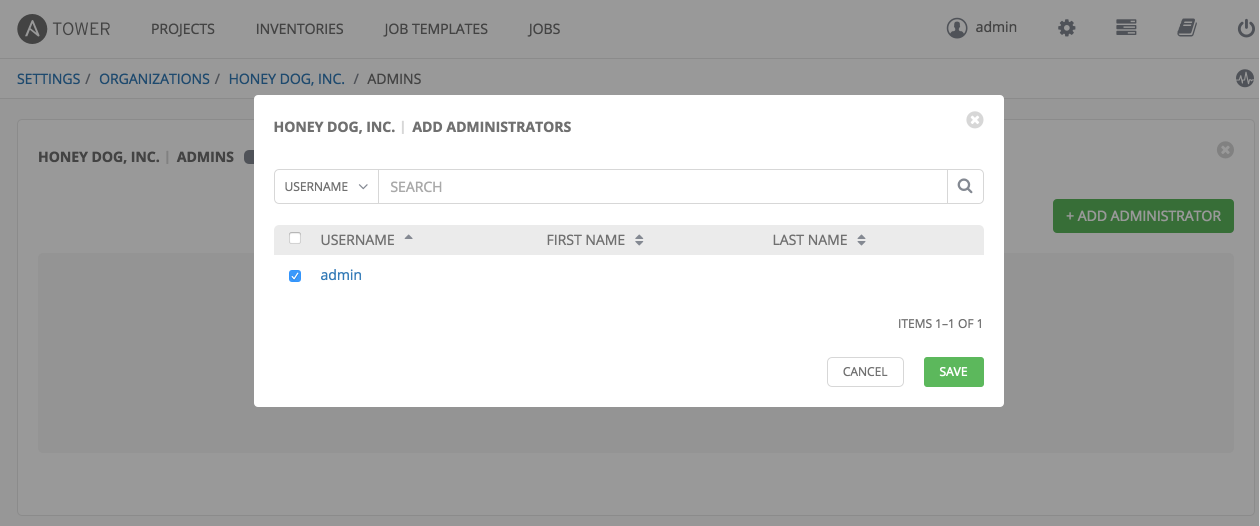
Note
A user must first be added to the Organization before it can be added to the list of administrators for that Organization.
